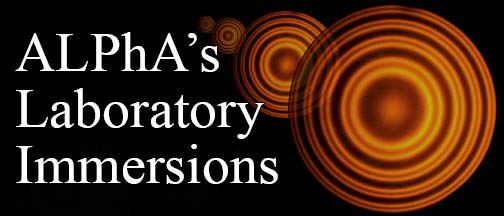- Home
- What We Do
- Laboratory Immersions
- Immersions 2020
- Imm2020Messiah_DynamicLightScattering
Messiah College PA
Dynamic Light Scattering of Dilute Suspensions
Dates: June 1, 2020 to June 3, 2020
Number of setups available: 1
Maximum number of participants: 2
------------------------------------------------------------------------------------------------------------------------------------------
Basic Physics
Dynamic light scattering (DLS) relies on two physical principles. The first is that the wavelike properties of light results in interference phenomena. In particular, when coherent light scatters off of particles in a solution, it creates a “speckle” interference pattern in the far field. The amount and direction of scattered light for particles of a given size is given by Rayleigh-Gans-Debye Theory.
The second physical principle is that particles in an aqueous suspension will undergo Brownian motion on a time scale that depends on temperature, fluid viscosity, and particle size.
The combination of these principles gives rise to an interference pattern that changes on the diffusive time scale of the particles in suspension.
By isolating a single “speckle” of the scattered light by use of a pinhole, we can monitor the light intensity of this speckle over time. The autocorrelation function–computed in real-time by an FPGA–provides a means of analyzing the time scale of diffusion, and thus, a means to particle size.
Significance
DLS is a non-destructive technique that is well-suited to characterizing the size and/or size distribution of suspended particles. One use is to characterize the size of nanoparticles formed by a chemical synthesis or in a protein isolate. A second use is to look for the presents of protein aggregates in assessing protein stability and/or investigating the biophysics of disease, such as aggregation of amyloid beta in Alzheimer’s Disease. A final use that will be explored in this immersion is the characterization of microphase transitions in amphiphilic molecules, in which molecules transition from isolated monomers to forming micelles.
Skills
By the end of this immersion, participants will be able to:
1) Perform basic alignment of optical components in a DLS system.
2) Describe how autocorrelation functions relate to particle size.
3) Interpret autocorrelation data through graphical/curve-fitting analysis.
4) Measure average size and polydispersity of a solution of nanoparticles.
5) Characterize the critical micelle concentration of solutions of amphiphiles.
Immersion Outline
1. Using simple thin-lens optics, participants will calculate the relative placement of lenses to construct a DLS apparatus.
2. Using a provided detector, lenses, pinhole, optomechanics, laser, and oscilloscope, participants will construct and a align a basic DLS apparatus.
3. Participants will use the DLS apparatus, provided custom-written software, and a pre-programmed FPGA to acquire data sets from monodisperse polystyrene microspheres.
4. Using curve-fitting analysis, participants will calculate the size of the microspheres using basic DLS theory.
5. Participants will examine photon count rate and perform autocorrelation analysis to examine changes in optical properties that occur at the critical micelle concentration (CMC) of non-ionic surfactants.
What to Bring
Participants should bring a laptop and notebook
Safety Considerations
All lasers used in this project are Class IIIa, which means that no additional protective eyewear is required. However, due caution should be exercised to avoid looking in the beam directly. Protective eyewear will be provided, though not strictly required.
Cost of Apparatus
The cost of implementing DLS depends primarily on the choice of detector and laser. We estimate that an educational-level apparatus could be constructed for as little as $1,000 with appropriate choice of components using an inexpensive diode laser and a detector constructed from a silicion photomultiplier (SiPM) and some commercially-available low-cost electronics. An undergraduate research-grade apparatus could be constructed for between $2,000 and $3,000.
Mentors: Matthew Farrar
Matthew Farrar received his Bachelors Degree in Physics
from McMaster University in Hamilton, Ontario, Canada in 2007. His graduate
work at Cornell University focused on using nonlinear optics for in vivo
imaging studies of the mouse spinal cord. He was awarded his PhD in Physics in
2012. He pursued a postdoctoral position in the Dept. of Neurobiology and
Behavior at Cornell University under the mentorship of Dr. Joseph Fetcho. His
work combined expertise in multiphoton and single-plane illumination
microscopies with CRISPR/Cas9 gene editing in zebrafish to characterize the
noradrenergic system.
He joined the physics faculty at Messiah College in 2015. His present work
focuses on using field programmable gate arrays (FPGAs) for photon correlation
spectroscopy in samples of biomedical and/or biophysical interest.





